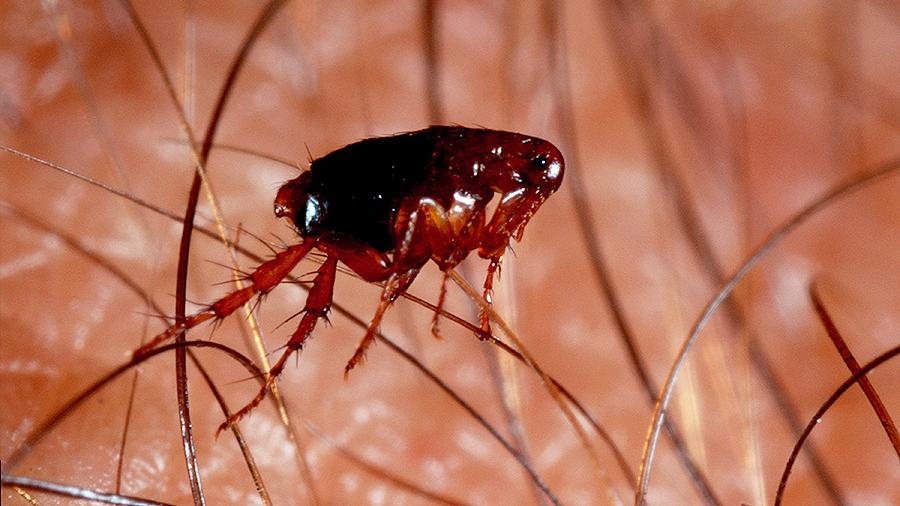Fleas, or pulgas in Filipino, are one of the most dreaded pests of pet lovers and pet owners. In the event that you notice fleas at home, especially on the floors, carpets, walls, bedsheets, or rugs, it’s mostly likely that there is a presence of them in your dogs or cats as well.
It’s an unfortunate thought having to deal with fleas because it affects the well-being of your pets, and flea bites in humans can cause skin allergies, itching and inflammation. Though flea bites may not often have serious impacts on human health, fleas can be carriers of diseases and parasites. If you have flea infestation in your house, it’s definitely a must to initiate treatment immediately.
Quick facts about fleas
Fleas are one of the oldest living pests in the world as well, having been around for millions of years. They rely on one thing for food: blood. They are blood-sucking insects that rely on hosts to survive. In an average house, five percent of fleas are on pets or animals, while ten percent are still in cocoons, tucked hidden in your carpets, rugs or even couches. The rest, or the majority, are still mostly in their larvae stages and unborn in eggs. This is the most important fact in their lifecycle. Fleas lay 40-50 eggs per day, and a single female flea can produce up to 2,000 eggs in her lifetime.
In order to prevent flea infestations, homeowners and managers must eliminate the fleas in all stages of their lifecycle, hence the need for series of treatments or spraying
How to spot fleas at home
Although dogs and cats naturally just love scratching, one of the easiest signs of flea infestation among your pests is their constant scratching. If they often look irritated and seems like wanting to bite their own skin, there could be some fleas feeding on their blood. If you notice these signs, you have to immediately check. Just comb through their fur, with your hands or with a comb, onto a clean white paper. Tiny black dots could be fleas. To verify, wet the paper and if these dots turn red, they are definitely adult fleas. Flea larvae and eggs are difficult to spot, and it’s best to just begin getting rid of these pests when you confirm their presence.
How to get rid of fleas permanently
- Prepare for cleaning and treatment. Pinpoint the areas where your pests spend most of the time in. These are the places where immature fleas and flea eggs are most likely found. Before cleaning and treating the area, it’s most important to treat your pets first with on-animal flea sprays. Consult your veterinarian for the best flea treatment for your dog or cat, to exterminate all mature fleas already feeding on your pet’s blood. However, after treatment, make sure not to return them in your untreated house yet until there is complete extermination of flea larvae and eggs.
- Conduct general cleaning with vacuum
Next step is to thoroughly clean both the indoor and outdoor areas of your home. Sweep and mop the floors, wash and wipe all surfaces, and if you can, wash your things with hot water. For all fabric and textile materials, make sure to vacuum every inch and corner of these pieces, be it rugs, carpets, curtains, couches, cushions, upholsteries, and even beds and pillows. You will also have to clean and wash all pet beddings, cages, dishes and toys. If you have a yard, make sure to cut the lawn grasses and remove dirt and debris. All food items, medicines and ingestibles must be well sealed and kept in safe spaces such as refrigerators or tightly closed cupboards.
- Treat with spraying for fleas
People and animals must be removed from the area before spraying professional quality flea control spray. It is important that you do this with the help of professional pest control providers. Spraying requires extensive, regular work until there is complete and permanent extermination of the fleas. Even if there are myriads of information on the Internet, conducting treatments for pests requires expertise in implementation and monitoring.
After-treatment and monitoring
Once you are done with these first steps of getting rid of fleas, make sure that you keep on regularly cleaning and vacuuming the areas to pick up dead fleas and eggs. You may need to do this after every few days.
You may or may not see adult fleas still present, but it is perfectly normal. These may be those fleas that were still in pupal stage when you had treatments, and they can be exterminated again with follow-up treatments that are usually perfectly done when the eggs and larvae have already potentially matured into adult fleas. Consult your pest control technicians as to the schedule of follow-up services.
If you need flea control treatments at home, feel free to contact us at 0917-852-6444.


2 Comments. Leave new
Good day po. Magiinquire po sana kung magkano rate nyo sa pest control? Yung bahay kasi namin maraming parasite pero mukhang pulgas ata sila. Nag try nakaming maglinis lahat pero meron parin. Salamat po
Dear Mr. Reymart,
Good day! Do you have cellphone number so we can call you to discuss your prepare treatment.
Thank you so much